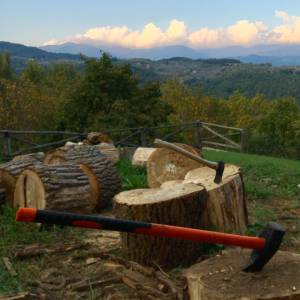Mother Henchard’s Buttocks
At least that’s what my sister thought they were colloquially known as. The two proximate chalk protuberances that rise out of the south Oxfordshire Thames flood plain near Dorchester. More politely known as Whittenham Clumps. Although ‘clump’ is itself rich in possibilities.
In fact the Clumps were colloquially known as Mother Dunch’s Buttocks. Although Henchard has more relish to it. The Dunch in question was apparently a Lady of a nearby Manor .
There is a nice website here https://www.nashclumps.org/later.html that explores Paul Nash’s painterly and affective relationship with the Clumps.
They were and still are a ‘wild place’ in the buttoned-down respectability of this part of England. A source of mysticism and imagination, maybe a place of momentary ribald rebellion against the staid order of aristocracy and the ploughman’s freezing lot behind an ‘orse in the heavy clay.
All of which is miles off the point but a footnote to the drive out to the home where Mum is now residing.
I meanwhile, back in Italy was at the dentist where the toing and froing over a wisdom tooth has settled on extraction. As if in reaction the dry cough I have had this last week suddenly developed into the drip and raw throat of something else.
This strange ram came from old John’s house and was close to hand to take a fleeting daily photo. Needs must.
He might have enjoyed the Mother Dunch tale but he was always very proper.
Postscript
It seems a Sir William Dunch, auditor of the Royal Mint, married into a local family in Little Whittenham and represented Wallingford as an MP and was favoured by Oliver Cromwell. He and the ‘fine Mrs Dunch’ ’ were/are commemorated in the chapel of Little Whittenham church in alabaster.
See Magna Britannia;: being a concise topographical account of the several counties of Great Britain Samuel Lysons (1806).
Mrs Dunch, married in 1599, was Oliver Cromwell’s aunt.
‘It is believed that the variant name for the rounded hills Wittenham Clumps (Mother Dunch's Buttocks) near the Dunch's family seat at Little Wittenham is associated with her.’ Says the Sir William Dunch entry of Wikipedia. So there you have it.
Here is a photo of the alabaster monument (extras) https://commons.wikimedia.org/wiki/File:LittleWittenham_StPeter_DuncheMonument.JPG
Clearly Lady Dunch is recumbent and well clothed.
There is apparently a Tudor verse to Mary Dunch nee Barns in the church. She appears to have been well though if the sentiment of the verse is accurate:
Well likd of poore and rich, her works so virtuous were
That much good will & neighbours love therefore hence did she beare:
http://roy25booth.blogspot.com/2009/05/bunch-of-dunches-little-wittenham.html
There the trail runs cold. Why Mother Dunch? Why Buttocks?
Buttocks emerges in Middle English. Chaucer uses it in The Summonner’s Tale as ‘buttok’ in the 14C.
But anatomically buttocks? The Clumps are also apparently known as the Berkshire Bubs - when they were in Berkshire. And from alabaster at least there is evidence of her Ladyship’s bubs that could be mistaken for the Clumps.
Was Mother Dunch a kindly matriarch as the verse suggests or much reviled as mentioned with no evidence here:
https://books.google.com/books/about/I_Never_Knew_That_About_the_River_Thames.html?id=R4jYsDLHcugC
She was after all Oliver Cromwell’s aunt at a time of civil war and Cromwell ordered the demolition of strategically and commercially important Wallingford castle.
But why Mother rather than Squire or Knight Dunch’s buttocks. Too dangerous and seditious to take a rise out of a man with the power of life and death?
Bloody history. It so soon becomes speculation and conjecture. But next time I’m passing I shall look out the church and do a bit of scouting around.


Comments
Sign in or get an account to comment.


